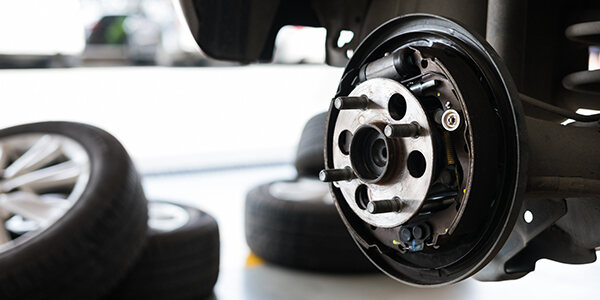Asphalt milling machines play a crucial role in maintaining smooth and safe roads. These machines are used to remove the top layer of asphalt from roads, allowing for a fresh layer to be applied. In this article, we will explore the work of asphalt milling machines and how they contribute to the overall quality and longevity of our roadways.
Introduction to Asphalt Milling Machines: What They Are and How They Work
Asphalt milling machines are heavy-duty equipment used in road construction and maintenance projects. They are designed to remove the top layer of asphalt pavement, allowing for a smooth and even surface. These machines use a rotating drum with teeth that grind and remove the asphalt material. The removed asphalt is then collected and can be recycled or used for other purposes. Asphalt milling machines are essential in preparing roads for resurfacing or repairing damaged sections. They are highly efficient and can cover large areas in a short amount of time. Additionally, these machines are equipped with advanced technology and features to ensure precision and accuracy in the milling process.
The Importance of Smooth Roads: Why Asphalt Milling Machines are Essential

Smooth roads are essential for safe and efficient transportation. They provide a comfortable ride for drivers and reduce wear and tear on vehicles. One crucial tool in achieving smooth roads is the asphalt milling machine. These machines are used to remove the top layer of old asphalt, allowing for a fresh layer to be applied. By removing the old and damaged asphalt, the milling machine helps to create a smooth and even surface. This is important for preventing accidents and ensuring a smooth driving experience. Additionally, asphalt milling machines are cost-effective as they allow for the reuse of existing materials, reducing the need for new asphalt and saving money in the long run.
Types of Asphalt Milling Machines: A Comprehensive Overview
There are several types of asphalt milling machines available in the market today. One of the most common types is the drum-style milling machine, which features a rotating drum with teeth that grind and remove the asphalt surface. This type of machine is ideal for larger projects and can cover a wide area in a short amount of time. Another type is the track milling machine, which is equipped with tracks instead of wheels. This allows for better maneuverability and stability, especially on uneven surfaces. Additionally, there are also smaller, handheld milling machines that are perfect for smaller projects or hard-to-reach areas. Overall, the choice of asphalt milling machine depends on the specific project requirements and the desired outcome.
The Process of Asphalt Milling: Step-by-Step Guide
Asphalt milling is a process used to remove the top layer of an asphalt pavement. This technique is commonly used to repair and restore damaged or deteriorated roads. The process involves the use of heavy machinery, such as milling machines, to grind and remove the asphalt surface. The milling machine cuts and grinds the asphalt into small pieces, which are then collected and transported away from the site. Once the milling process is complete, the surface is left with a rough texture, providing a suitable base for the application of a new layer of asphalt. This step-by-step guide provides a comprehensive overview of the asphalt milling process.
Benefits of Asphalt Milling Machines: Improving Road Quality and Longevity
Asphalt milling machines play a crucial role in improving road quality and longevity. These machines are used to remove the top layer of asphalt from roads, allowing for a smooth and even surface. By removing the damaged or deteriorated asphalt, milling machines help to eliminate potholes, cracks, and other surface imperfections. This not only improves the overall appearance of the road but also enhances its safety and durability. Additionally, asphalt milling machines are cost-effective as they can recycle the milled asphalt for future use, reducing the need for new materials. Overall, these machines are essential in maintaining and extending the lifespan of roads, ensuring a smoother and safer driving experience for all.
Challenges and Innovations in Asphalt Milling: What the Future Holds
Asphalt milling is a crucial process in road construction and maintenance, but it also presents several challenges. One of the main challenges is the need for efficient and cost-effective milling techniques. Traditional milling methods can be time-consuming and expensive, requiring multiple passes to achieve the desired result. However, innovations in milling technology are addressing these challenges. Advanced milling machines equipped with cutting-edge features such as automatic depth control and real-time monitoring systems are improving efficiency and reducing costs. Additionally, the use of recycled asphalt pavement (RAP) in milling operations is gaining popularity, as it not only reduces waste but also provides a more sustainable solution. These innovations are shaping the future of asphalt milling, making it more efficient, cost-effective, and environmentally friendly.
Conclusion
In conclusion, asphalt milling machines play a crucial role in maintaining smooth and safe roads. These machines are able to remove old and damaged asphalt, allowing for a fresh layer to be applied. With advancements in technology, these machines are becoming more efficient and effective, ensuring that our roads remain in top condition for years to come.
What is asphalt milling?
Asphalt milling is the process of removing a layer of asphalt from a road or pavement surface. This is done using specialized equipment called asphalt milling machines.
Why is asphalt milling necessary?
Asphalt milling is necessary to repair and maintain roads and pavements. It helps to remove damaged or deteriorated asphalt, creating a smooth and even surface for vehicles to drive on.
How does an asphalt milling machine work?
An asphalt milling machine uses a rotating drum with teeth to grind and remove the asphalt surface. The machine moves forward, gradually removing the asphalt layer and depositing it into a truck for disposal.
What are the benefits of asphalt milling?
Asphalt milling offers several benefits, including improved road safety, enhanced drainage, and increased pavement lifespan. It also reduces the need for complete road reconstruction, saving time and money.
Is asphalt milling environmentally friendly?
Yes, asphalt milling is considered environmentally friendly. The removed asphalt can be recycled and used in new road construction. Additionally, the process reduces the need for new materials and minimizes waste.
How long does asphalt milling take?
The duration of asphalt milling depends on the size and complexity of the project. Small milling jobs can be completed in a few hours, while larger projects may take several days. Factors such as weather conditions and traffic flow can also affect the timeline.

